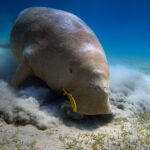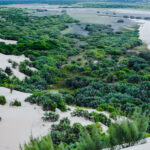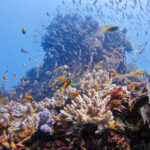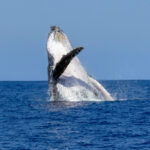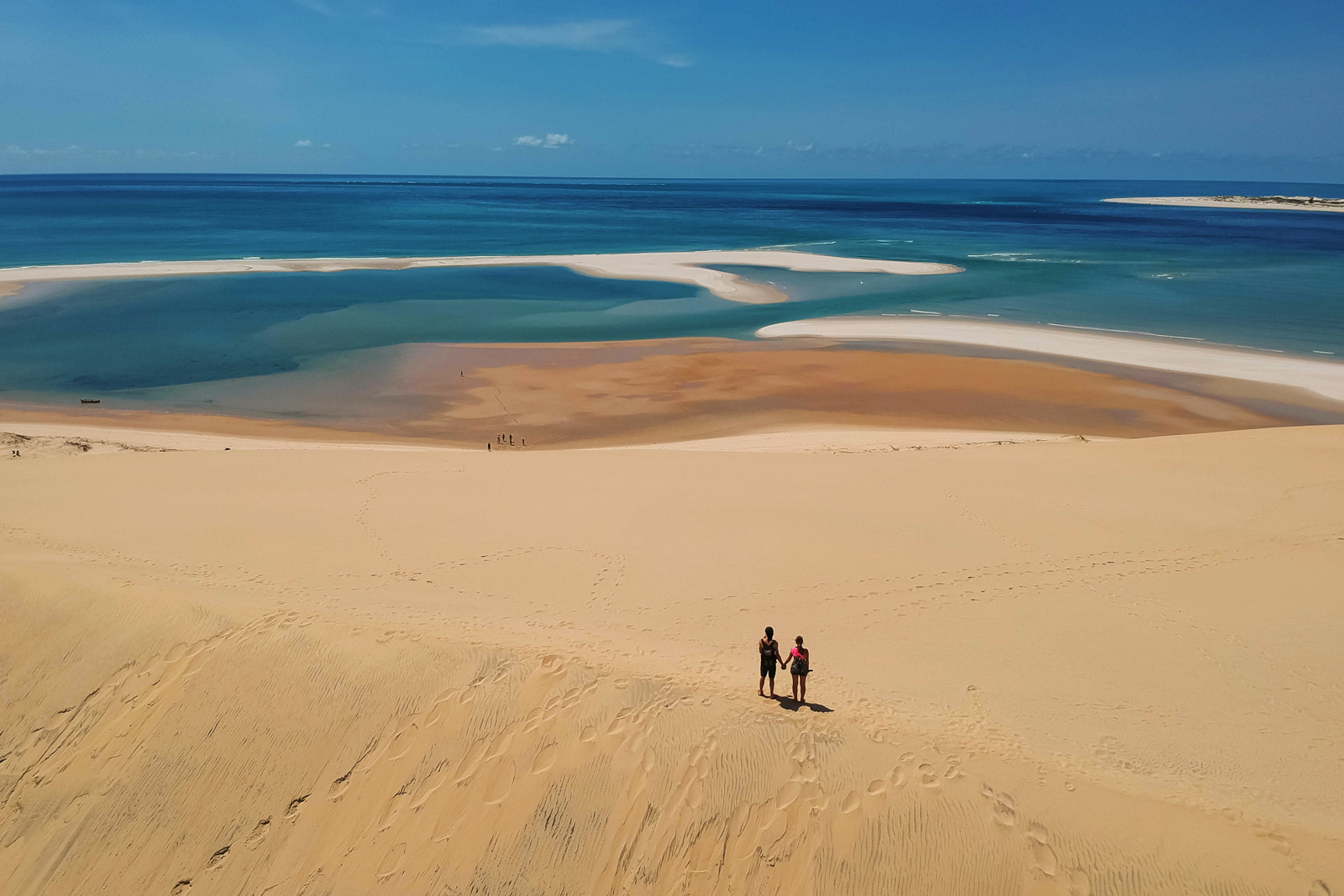
The Bazaruto Archipelago – A Brief History and Fascinating Facts
Nestled off the coast of Mozambique, the Bazaruto Archipelago is a natural wonder, boasting a rich history and an abundance of biodiversity.
This group of five islands—Santa Carolina, Bazaruto, Benguerra, Magaruque, and Bangue—stretches 70 kilometers north from the Cabo São Sebastião Peninsula.
Though this article is based on compiled information from various sources and not scientific expertise, we hope you’ll find it both intriguing and informative.
Table of Contents
A Treasure Trove of Biodiversity
The Bazaruto Archipelago is renowned for its ecological significance and vibrant wildlife. It hosts the largest population of dugongs in Eastern Africa, estimated at around 250 individuals. The islands are also home to:
- 180 species of birds
- 45 species of reptiles
- 2,000 species of fish, which account for 75% of the species found in the Indian Ocean
The region’s habitats are remarkably diverse, ranging from coastal sand dunes and coral reefs to mangrove forests and seagrass meadows. These habitats support a dynamic ecosystem, underscoring the Archipelago’s importance as a conservation priority.
Its rich waters offer a snorkelling and scuba diving paradise, definitely worth a visit.
Conservation Efforts
Recognizing its global significance, the Bazaruto Archipelago received some level of protection starting in 1971. In 2001, it was officially designated as a National Park. Conservation measures aim to safeguard its unique marine and terrestrial environments, ensuring that this ecological treasure remains intact for generations to come.
Human Inhabitants
Approximately 5,000 people reside on the islands of Bazaruto, Benguerra, and Magaruque. Most inhabitants rely on artisanal fishing as their primary livelihood, maintaining a delicate balance with the surrounding environment.
Geological Origins
The Archipelago’s formation is a fascinating tale shaped by natural forces over millennia. Geological studies suggest that the islands were formed during two phases of post-glacial sea level rise:
- 12,000 years ago, Santa Carolina emerged as the sea level rose.
- 6,000 to 7,000 years ago, another sea level rise stabilized the formation of Bazaruto, Benguerra, and Magaruque.
Originally, these islands may have been part of a continuous sand body connected to the mainland. The breaks between the islands are thought to have been caused by tropical cyclones. Over time, sand accumulated through wave action, and prevailing winds sculpted sand dunes that shaped the islands’ landscapes. Interestingly, the islands are believed to be slowly migrating toward the mainland at a rate of approximately 600 meters per 1,000 years.
The landscapes these movements generated are amongst the most beautiful in the world and are often called the “pearl of the Indian Ocean”. A visit to the Bazaruto’s islands, on a traditional dhow or with a speed boat are a must when visiting Vilanculos.
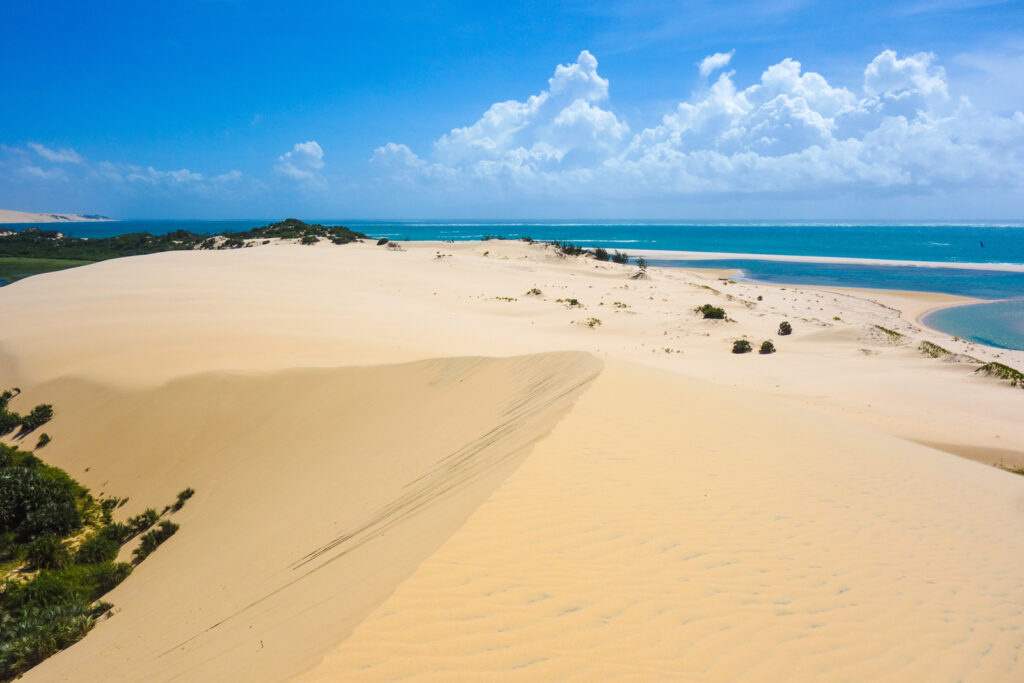
View from Bazaruto archipelago sand dunes in Mozambique
Historical Significance
The Bazaruto Archipelago holds a rich cultural history. Archaeological relics found at Ponta Dondo (South Bazaruto) suggest that the area was occupied during the Iron Age. These settlements indicate connections with the Indian Ocean’s expansive trading network.
By the 16th century, the Archipelago was a thriving hub linked to Muslim cities like Mombasa and Malindi. Written accounts from this period describe the area as prosperous and wealthy. However, the advent of the slave trade caused significant upheaval, driving much of the population to the mainland and marking the end of the Archipelago’s golden age.
A Legacy Worth Protecting
Today, the Bazaruto Archipelago stands as a testament to the interplay of natural forces and human history. Its unique biodiversity, captivating landscapes, and cultural heritage make it a destination of world significance. Whether you’re drawn to its ecological richness or its storied past, the Archipelago offers a glimpse into a world shaped by nature and nurtured by generations of inhabitants.
While this article presents a compilation of information from various sources, we hope it highlights the wonders of the Bazaruto Archipelago and inspires further curiosity about this extraordinary corner of the world.

